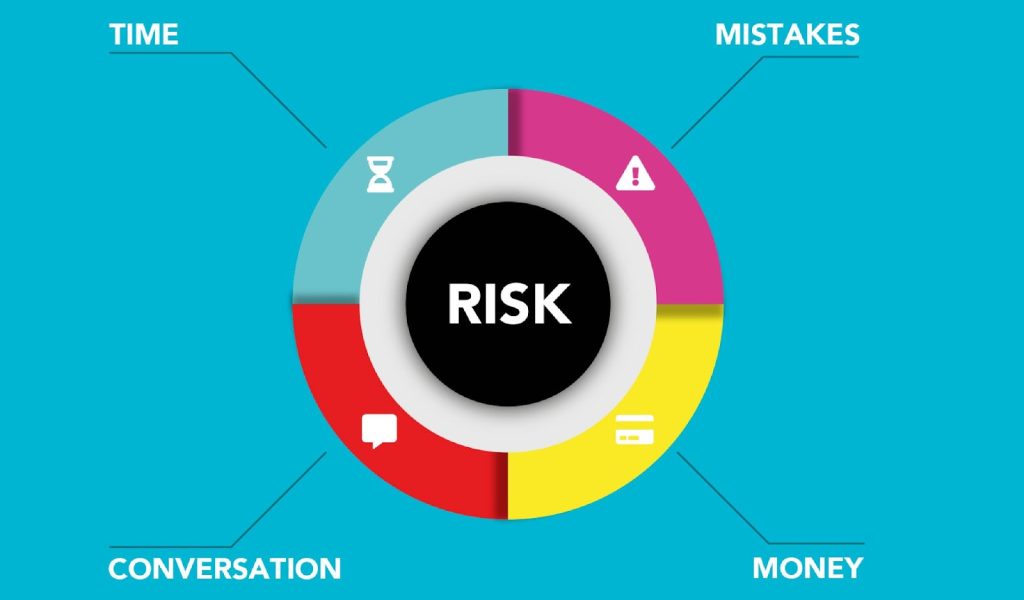It’s impossible to eliminate the potential risk when it comes to making the best economic decisions for your company. Decisions must be made even when we have no access to all of the facts and are uncertain about the future. Understanding how to manage risk in business involves conducting comprehensive risk assessments to identify potential threats to the company’s objectives. Risk management has always been an important tool in running any business, especially during a market economic downturn.
What is a Business Risk?
A business risk compromises a company’s financial objectives. Business risks can be classified as internal or external RISKS, and they include:
Political changes
Cybersecurity risks
Threats to one’s reputation
mergers and acquisitions
Emergencies in health
Location Hazards
An unexpected event can destroy your business in one go in any economic environment if you don’t have the right risk management strategies in place to prevent, or at least mitigate, the damage from that risk. In this article, we will look at some of the ways to manage business risk:
How to manage risk in business
Look at Past Situations

There are risks and uncertainties in every business decision. To begin, you should attempt to identify the risks. If you’ve had similar situations and experiences, look in the past for solutions. Make backup plans for various scenarios and be willing to adjust and change your decisions.
Consider Multiple Possibilities
You will never have all of the information you need to make an informed decision. The goal is to assess and manage risk and make intelligent choices. It is proven that risk analysis can be done through 3 different scenarios- Best-case, likely-case, and worst-case scenario. This strategic risk management plan has the potential to flush out possible outcomes.
Eliminate Business System Silos
Silos, which represent isolated departments or systems, can amplify risk levels by hindering effective communication, limiting information sharing, and restricting a comprehensive view of potential threats. Business systems that are siloed are too rigid to handle unknown risks. Signals can come from a range of sources and forms, including conversations with your sales, support, or finance teams from customers who are affected or from regulators.
For visibility into cash position, future cash inflow, and actions that may impact deals or renewals, businesses should feed signals from across functions into a unified view. Organizations can strengthen their resilience, increase the efficacy of risk management, and strengthen their barriers against possible threats by eliminating these obstacles.
Manage the Variables You Can
Stay informed and examine identical past data sets. Most importantly, control the variables you can while ensuring that you fail fast. Improving operational efficiency and optimizing processes within the organization are essential for controlling variables. For instance, Streamlining workflows, improving supply chain logistics, implementing strict quality control measures, and investing in technology can all help to reduce the risks associated with operational disruptions and inefficiency. Businesses can reduce their exposure to certain risks by addressing these internal risk variables.
Trust your Intuition
This is the specific capability of visionary leaders, who search not only for data but also for facts, learn from previous businesses or projects, apply SWOT analysis, calculate risk, determine mitigations, and create a Plan B for consequences. These leaders not only trust their instincts, but they also never stop learning, taking risks, and tracking their path for the future.
Be Ready for a Change
When it comes to risk management, I recommend a combination of approaches. A SWOT analysis can help guide a company or team in the right direction. It is recommended to create a pivot business strategy if market regulations change dramatically. Begin with Plan A, but if necessary, quickly switch to Plan B. Make quarterly as well as monthly assessments to determine if you’re on track.
Research And Assess Market Trends
The future is always uncertain. Leaders must research the market and trends prior to making a decision based on the information offered today. Market research allows businesses to stay on top of changing consumer preferences, industry developments, and competitive landscapes. Organizations can predict changes in demand, emerging market opportunities, or potential disruptions by analyzing market trends, allowing them to adjust their strategies, manage operational risks accordingly, and reduce the risks associated with market fluctuations. Sometimes it’s best to wait until things are a little more certain in the future.
Engage Regularly
Managing uncertainty requires remaining engaged and informed for decisions to be flexible enough to accommodate change. Being involved with customers, regulators, and suppliers allows you to help shape their direction in a way that benefits your company. Maintaining awareness of their preferences allows you to plan for the necessary flexibility to accommodate their evolving positions.
Make A Risk Management Plan

Implement best practices for risk management and standard project management. Create a risk management framework for your company by identifying potential risks and determining them to the best of your ability. Determine the best way to mitigate risks based on their likelihood. Create risk criteria to keep track of everything, and revisit the plan on a regular basis to keep it up to date as situations change.
Break Potential Risks Into Smaller Risks
Going by experience is a strong point in favor of risk management. Depending on the circumstances, it is strongly advised to break risks down into smaller risks. Determine what impact will be caused by smaller risks. Return and see if any of the experiences of an individual or an organization might be of assistance. Apply it if it will help. If not, address the risk.
Prioritize Contingency Planning
When it comes to managing uncertainty, a firm’s armor must include contingency planning. It will be critical to begin planning for what-if scenarios early on and to have pseudo-teams focused on contingency and implementation. Firms can also collaborate with peers in the industry and industry bodies to establish industry assumptions, which will be critical for benchmarking through contingency planning.
Starting a business requires calculated decision-making and proactive risk management to navigate uncertainties effectively.
Consider the Worst-Case Scenario
Analysis paralysis can lead to unnecessary indecision. In times of uncertainty, asking yourself, “What is the worst that could happen?” can help you put things into perspective and be more decisive. The worst-case scenario is often manageable.
Effectiveness of Business Programs to handle risks
Structured Frameworks: Business coaching programs provide structured frameworks and methodologies for systematically identifying, assessing, and managing various types of risks that organizations face.
Comprehensive Risk Assessment: These programs emphasize thorough risk evaluations, which allow businesses to identify potential threats, vulnerabilities, and opportunities and take proactive measures.
Risk Management Practices: Risk identification and management aid in the protection of your company’s finances and reputation. These Business programs provide best practices and guidelines for establishing risk tolerance levels and implementing control measures to reduce the impact of identified risks.
Cultivating a Risk-Aware Culture: These programs foster a risk-aware culture among employees at various levels, encouraging proactive measures to evaluate risk across the organization.
Continuous Monitoring and Evaluation: Business programs emphasize the importance of continuously monitoring risk indicators, performance metrics, and compliance standards, allowing for adaptive risk management strategies in response to changing circumstances.
FAQs for best practices on how to manage risk in business
What are the 10 Types of Business Risks?
Compliance risk
Legal risk
Human risk
Strategic risk
Financial risk
Reputational risk
Competition risk
Operational risk
Security risk
Physical risk
What are the 5 core steps in the risk management process?
Step 1: Identifying Risks
Step 2: Risk Assessment
Step 3: Prioritizing the Risks
Step 4: Risk Mitigation
Step 5: Monitoring the Results







